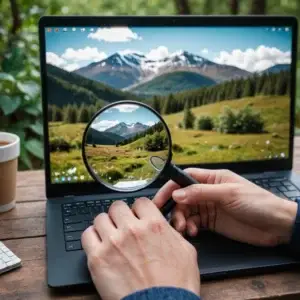
5G technology is the latest advancement in cellular network technology and it promises to bring a wide range of new and exciting possibilities. With their faster speeds, lower latency, and increased capacity, 5G networks are well-suited for a variety of use cases and applications that were not possible with previous generations of cellular networks. 5G technology is also expected to have a significant impact on the economy and is expected to be widely adopted around the world, with the number of 5G connections forecast to reach 2.8 billion by 2025, according to the research firm Ericsson. Furthermore, the 5G market is forecast to reach $1.4 trillion by 2026, according to Markets and Markets research.
As 5G technology is still evolving, research and statistics on the subject are expected to change over time. Companies should keep an eye on these developments and consider how they can take advantage of the opportunities that 5G technology presents. There is ongoing research and development being conducted by companies, universities, and government organizations around the world.
Here are 5 key areas of research and development include:
1. Network architecture: Researchers are working on developing new network architectures that can support the high speeds and low latency of 5G networks. This includes research on new types of antennas, modulation schemes, and other technologies that can improve the performance of 5G networks.
2. Spectrum: As 5G networks use a wider range of frequency bands than previous generations of cellular networks, researchers are working on ways to optimize the use of these bands and manage interference between different types of devices.
3. Security: 5G networks are expected to be used for a wide range of sensitive applications, and researchers are working on developing new security protocols and technologies that can protect these networks from cyber threats.
4. Network slicing: With 5G network slicing, researchers are working on ways to create virtual networks that can be customized to meet the specific needs of different applications and services.
5. Edge computing: With 5G, more data processing and storage can be done closer to the source, reducing the latency and data transfer costs. Researchers are working on ways to improve edge computing, which can lead to new services and capabilities.

5G is expected to have a significant impact on many industries. Companies, universities, and government organizations are working on developing new use cases and applications for 5G technology, including in areas such as autonomous vehicles, smart cities, virtual reality, augmented reality, and telemedicine.
One of the most promising uses of 5G technology is the Internet of Things (IoT). 5G networks can support a large number of connected devices, making them ideal for IoT applications such as connected cars, smart cities, and industrial automation. With 5G, these devices can communicate with each other and with the cloud in real time, enabling new services and capabilities that were not possible before.
Another area where 5G is expected to have a significant impact is virtual and augmented reality. 5G’s low latency and high bandwidth capabilities enable more immersive virtual and augmented reality experiences and applications. This technology will help to bring more realistic and engaging experiences to users, such as video games, education, and training.
5G is also expected to play an important role in remote work, which has become increasingly important in recent times. 5G technology can help companies support remote workers by providing faster and more reliable connectivity, which makes it easier for employees to access the resources they need to do their jobs. With 5G, employees can work from anywhere and still have access to the same resources and services as if they were in the office.
In the industrial sector, 5G can support the communication of industrial robots and autonomous vehicles, which can be used for tasks such as warehouse management, delivery, and manufacturing. 5G’s low latency and high bandwidth capabilities enable these machines to communicate with each other in real time and make decisions based on the data they collect, which can lead to increased efficiency and automation.
Another area where 5G can have a significant impact is edge computing. 5G networks can support edge computing, which enables data processing and storage closer to the source, reducing the latency and data transfer costs. This allows companies to process and analyze data in real time and make decisions based on that data, which can lead to improved efficiency and new services and capabilities.
These are just a few examples of the many ways in which 5G technology is expected to change the way we live and work. As 5G networks become more widely available and the technology continues to evolve, we can expect to see even more innovative use cases and applications emerge. Companies should keep an eye on these developments and consider how they can take advantage of the opportunities that 5G technology presents.



